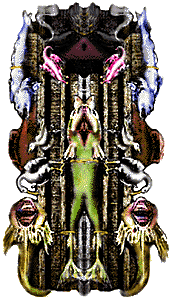
THE CONTEMPORARY ANOMALY
A closer scrutiny of this half of the exhibition reveals an inescapable instability and fluidity of categorical boundaries. The same object can occupy a wide variety of categories, providing different kinds of knowledge depending on the context and the questions we ask. Categories, far from being defined by the intrinsic qualities of objects and their function, instead themselves define how we interpret the primary function of the objects, and what we decide the "intrinsic" qualities of the objects are.

Some objects within the exhibition are placed on the border of two categories and participate equally in both. The
category changes our relationship to the object. This is particularly true for objects which take on a historical
importance, such as souvenirs and other personal memorabilia, which overrides their practical function. A particularly
vivid example of this in the exhibition was a dress once worn by Dinah Shore in her television series. As a tool it was
used first by Shore and then by the Drama department as a costume, but because of its associations it must also be
considered an object of commemoration. In acknowledgment of its dual status, we placed it on the border between the
section on tools and the section on commemoration. Yet these are not two categories that overlap gracefully; in fact,
they tend to cancel one another out. What serves as a tool is used as a means to an end; what is seen as an object of
commemoration becomes an end in itself, enshrined and protected from the wear and tear to which tools are subjected.
This is just one of a number of objects in this half of the exhibition which break down the boundaries between
categories, and perhaps even more importantly, between disciplines. As in the sixteenth century, interactions which
cross disciplinary boundaries are today often crucial in generating knowledge about symbiotic relationships and larger
systems. Yet there is still a tendency to view the modern system of structuring the world as logically ordained and
intrinsic to the physical world, despite increasing evidence that our categories are just as much arbitrary
conveniences today as the four-fold divisions of the sixteenth century world were then.
 |
{Essays} {Gallery} {Microcosms} |
 |